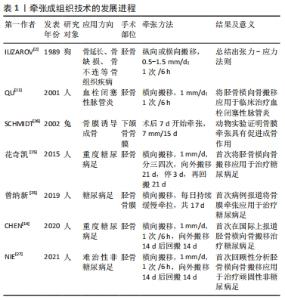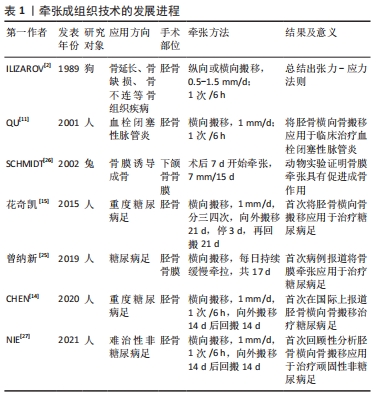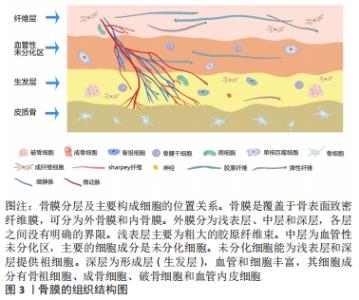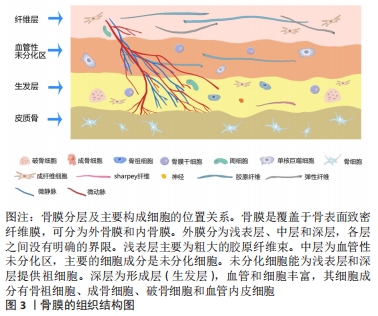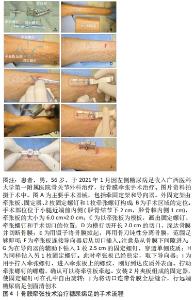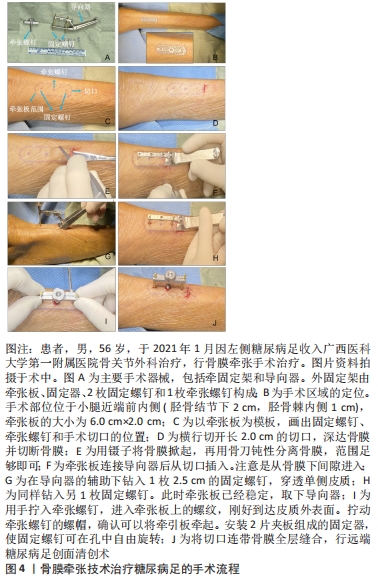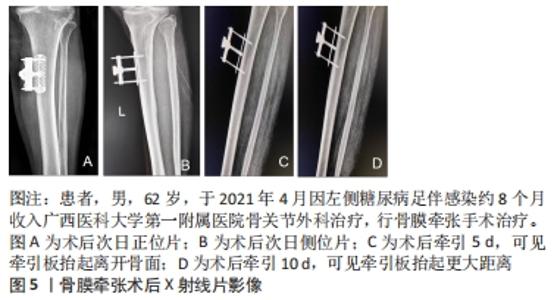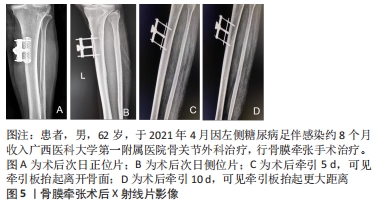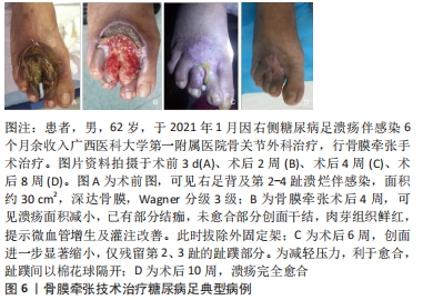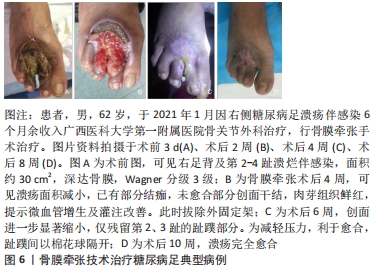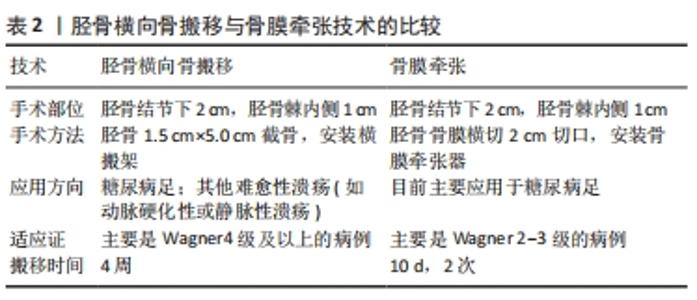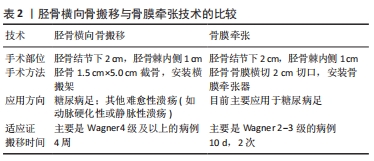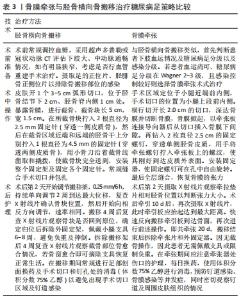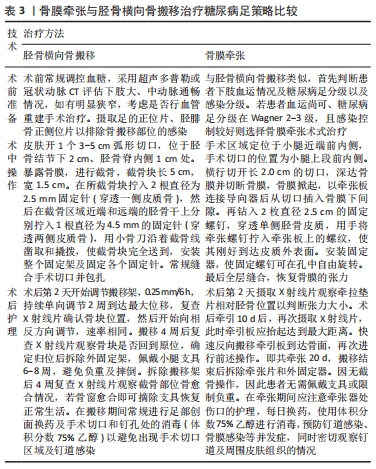| [1] |
Xu Qijing, Yang Yichun, Lei Wei, Yang Ying, Yu Jiang, Xia Tingting, Zhang Meng, Zhang Tao, Zhang Qian.
Advances and problems in cell-free treatment of diabetic skin chronic wounds
[J]. Chinese Journal of Tissue Engineering Research, 2023, 27(6): 962-969.
|
| [2] |
Cheng Kang, Wang Bin, Tu Zhenxing, Wang Zixin, Zheng Yongxin, Tian Yuqing, Yang Xiao.
Relationship of the morphology of three types of callus in the extension area after tibial bone transfer with bone healing
[J]. Chinese Journal of Tissue Engineering Research, 2023, 27(27): 4373-4378.
|
| [3] |
Li Rui, Ou Xiaolan, Liu Jun, Tian Heng, Qu Wenrui, Zhu Zhe, Zhang Zhenyu, Liu Qianqian, Guo Wenlai.
Introduction to the ANTI∙DF principle for diabetic foot prevention and treatment
[J]. Chinese Journal of Tissue Engineering Research, 2023, 27(14): 2291-2296.
|
| [4] |
Lyu Zichen, Tu Zhenxing, Xu Ao, Cheng Kang, Wang Hongtao, Wang Bin.
Mechanism of bone healing and angiogenesis during distraction osteogenesis
[J]. Chinese Journal of Tissue Engineering Research, 2022, 26(36): 5881-5888.
|
| [5] |
Deng Xiaohui, Zhang Zengzeng, Zhang Zhihua, Zhu Lingyan.
Mechanism and application prospects of mesenchymal stem cell exosomes gene-modified microRNA in the treatment of diabetic foot
[J]. Chinese Journal of Tissue Engineering Research, 2022, 26(31): 5076-5084.
|
| [6] |
Jia Qiyu, Huang Xiaoxia, Guo Jian, Huang Jinyong, Guo Xiaobin, Abdussalam·Alimujiang, Wu Tong, Ma Chuang.
Integrin-targeted peptide promotes proliferation of bone marrow mesenchymal stem cells in SD rats
[J]. Chinese Journal of Tissue Engineering Research, 2022, 26(30): 4780-4786.
|
| [7] |
Zhou Junli, Wang Xiaojun, Wang Haijiao, Li Chun.
A network meta-analysis of the efficacy of new medical dressings for diabetic foot ulcers
[J]. Chinese Journal of Tissue Engineering Research, 2022, 26(16): 2562-2569.
|
| [8] |
Gao Lei, Qin Xinyuan, Li Tianbo, Wang Shuo, Yu Zeyang, Wang Jiangning.
Co-transplantation of acellular allogeneic dermis and autologous split-thickness skin for repairing diabetic foot wound
[J]. Chinese Journal of Tissue Engineering Research, 2022, 26(14): 2138-2143.
|
| [9] |
Zhao Zixi, Xu Jun, Ding Min, Li Xiwen, Zhang Jinghang, Wang Penghua.
Changes of type I and III collagen and matrix metalloproteinase 2 and 9 on the wound of diabetic foot ulcer with external application of medical collagen dressing
[J]. Chinese Journal of Tissue Engineering Research, 2022, 26(10): 1544-1550.
|
| [10] |
Su Chengli, Zhu Songsong, Li Yunfeng.
Application of transport distraction osteogenesis in reconstruction of mandibular segmental defects
[J]. Chinese Journal of Tissue Engineering Research, 2021, 25(35): 5604-5609.
|
| [11] |
Gan Lili, Xiong Na, Liu Yanfei.
Hydrogel as drug scaffold in skin wound repair: challenges of clinical application possibilities
[J]. Chinese Journal of Tissue Engineering Research, 2021, 25(22): 3578-3583.
|
| [12] |
Li Wenhui, Liu Guobin.
Knowledge mapping analysis on the international research of diabetic foot: a visual analysis based on CiteSpace
[J]. Chinese Journal of Tissue Engineering Research, 2021, 25(20): 3178-3184.
|
| [13] |
Liu Zhendong, Qin Sihe.
Four-dimensional
space events of fracture healing
[J]. Chinese Journal of Tissue Engineering Research, 2020, 24(6): 903-910.
|
| [14] |
Jiang Shengyuan, Gong Zhihao, Song Kaikai, Du Gangqiang, Li Peng, Zhang Kai.
Role of periosteum in fracture healing and bone tissue repair
[J]. Chinese Journal of Tissue Engineering Research, 2020, 24(30): 4860-4865.
|
| [15] |
Zhang Yan, Shen Zhen, Li Zige, Huang Minling, Feng Junming, Xie Lei, Gao Yijia, Zeng Zhanpeng, Jiang Ziwei.
Establishing a rat model of atrophic nonunion by using circular external fixator combined with periosteum cauterization
[J]. Chinese Journal of Tissue Engineering Research, 2020, 24(29): 4650-4655.
|
